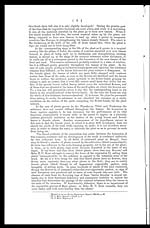Medicine - Drugs > Report on the cultivation and use of ganja > Part First - Ganja as an article of commerce
(9) [Page 1]
Download files
Individual page:
Thumbnail gallery: Grid view | List view
![(1) [Page 1] -](https://deriv.nls.uk/dcn17/7491/74913686.17.jpg)
REPORT
ON THE
CULTIVATION AND USE OF GÁNJÁ.
Part first: Ganja as an article of commerce.
CHAPTER I.—THE SOURCE AND NATURE OF THE GÁNJÁ RESIN.
THE plant which produces gánjá is that which also produces hemp-fibre.
It has been said that there are two varieties of this plant (Cannabis sativa L.);
one, the true hemp, characteristic of temperate climates, is grown for its fibre;
the other, Indian hemp (Cannabis sativa, variety indica), found in tropical and.
sub-tropical regions, is grown for its narcotic properties; it has even been
supposed that these two are distinct plants. This is certainly not the case.
There are no botanical characters to separate them; they do not differ as
regards the structure of stem, leaves, flowers, or fruit. Nor are their practical
differences sufficiently permanent to distinguish them as varieties. In the
Indian plains, in Malaya, and in tropical Africa, the narcotic quality is that
chiefly developed, and that for which the plant is grown. Still, as was pointed
out nearly 150 years ago, the plant has in Malaya the fibre of the European one,
though not so strongly developed1; it would seem, too, as if sometimes in the
Indian plains the plant yields a good fibre.2 In the Western Himalaya and in
Turkestan the plant is narcotic and at the same time yields an excellent fibre.
When taken to Europe Indian seed produces plants that are not narcotic,3
though if the seed be Himalayan the fibre they yield is second to none; plains'
seed produces plants whose fibre is for a season or two not so good, though it
improves ultimately.4 And. though in Europe the plant is not narcotic, it is
markedly so in temperate North America5 and in temperate South Africa.6
Hemp is one of those plants in which the sexual elements are contained in
distinct flowers; these flowers are, moreover, with very rare exceptions, borne on
different plants. Both this rule and its exception bear directly, as will be seen, on
the subject of this enquiry. In the Western Himalaya and in Turkestan, where
both fibre and narcotic are collected, the male plant gives the best fibre, the
female yields most narcotic. In Europe, where the narcotic property is not
developed, it is still the male plant that yields the best and toughest fibre.7In
the Indian plains, where the plant is carefully cultivated for its narcotic power,
only the female plant is allowed to reach maturity. Hemp therefore, as a fibre-
yielding plant, in no way differs from hemp as a narcotic-producing one.
With the fibre-yielding property as such, we do not here have to deal; the
narcotic quality we must now examine more closely. This resides in a resinous
material developed chiefly in tropical and sub-tropical as opposed to temperate
countries. The presence of the narcotic quality in the temperate Himalaya,
Turkestan and North America is, in a sense, exceptional to the rule. The history
of the formation of this substance is as yet obscure. We know, however, that in
India it is not perceptible in young plants, while in plants that are from half to
1Rumphius, Herbarium Amboinense, v, 210 (1760).
2 Godavery Hemp; Watt, Dictionary of Economic Products, ii, 110.
3 Darwin, Animals and Plants under Domestication, ii, 264.
4 Spon, Encyclopœdia of Arts and Manufactures, i, 934.
5 Wood, Proceedings of the American Philosophical Society, xi, 226.
6 Martius Studien ueber den Hanf. 37.
7 Spon, Encyclopœdia, i, 934.
Set display mode to: Large image | Zoom image | Transcription
Images and transcriptions on this page, including medium image downloads, may be used under the Creative Commons Attribution 4.0 International Licence unless otherwise stated. ![]()
| India Papers > Medicine - Drugs > Report on the cultivation and use of ganja > Ganja as an article of commerce > (9) [Page 1] |
|---|
| Permanent URL | https://digital.nls.uk/74913684 |
|---|




